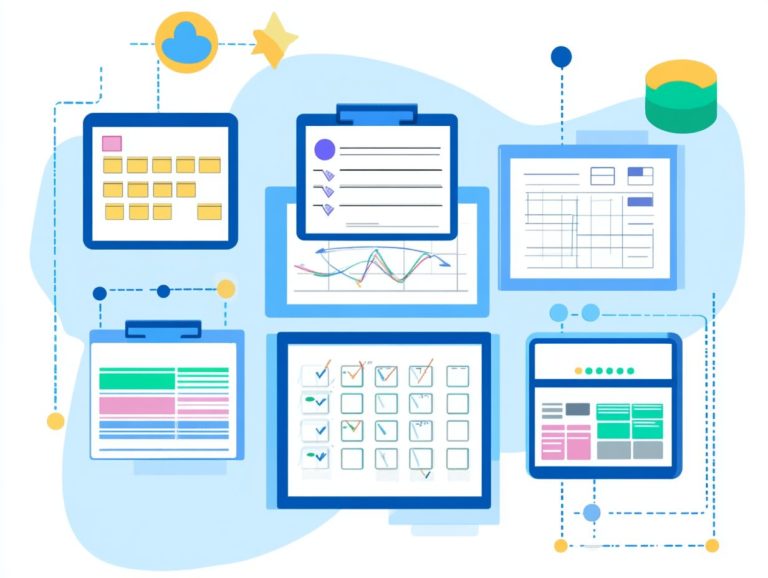Understanding Market Risk vs. Credit Risk
Understanding the nuances between market risk and credit risk is essential as you navigate today s intricate financial landscape.
This article delves into the key differences between these two types of risk. We will examine their diverse impacts on your organization and the tools available for measuring them.
We will also outline effective strategies for managing these risks and highlight the potential consequences they may impose on your business operations.
Explore with us as we unravel the complexities of market and credit risk, empowering your decision-making process.
Contents
- Key Takeaways:
- Defining Market Risk and Credit Risk
- Key Differences Between Market Risk and Credit Risk
- Measuring Market Risk and Credit Risk
- Managing Market Risk and Credit Risk
- Impact of Market Risk and Credit Risk on Businesses
- Frequently Asked Questions
- What is the difference between market risk and credit risk?
- How are market risk and credit risk measured?
- Which type of risk is more significant for financial institutions?
- How do market risk and credit risk impact investment decisions?
- Can market risk and credit risk be managed?
- What are some examples of market risk and credit risk?
Key Takeaways:
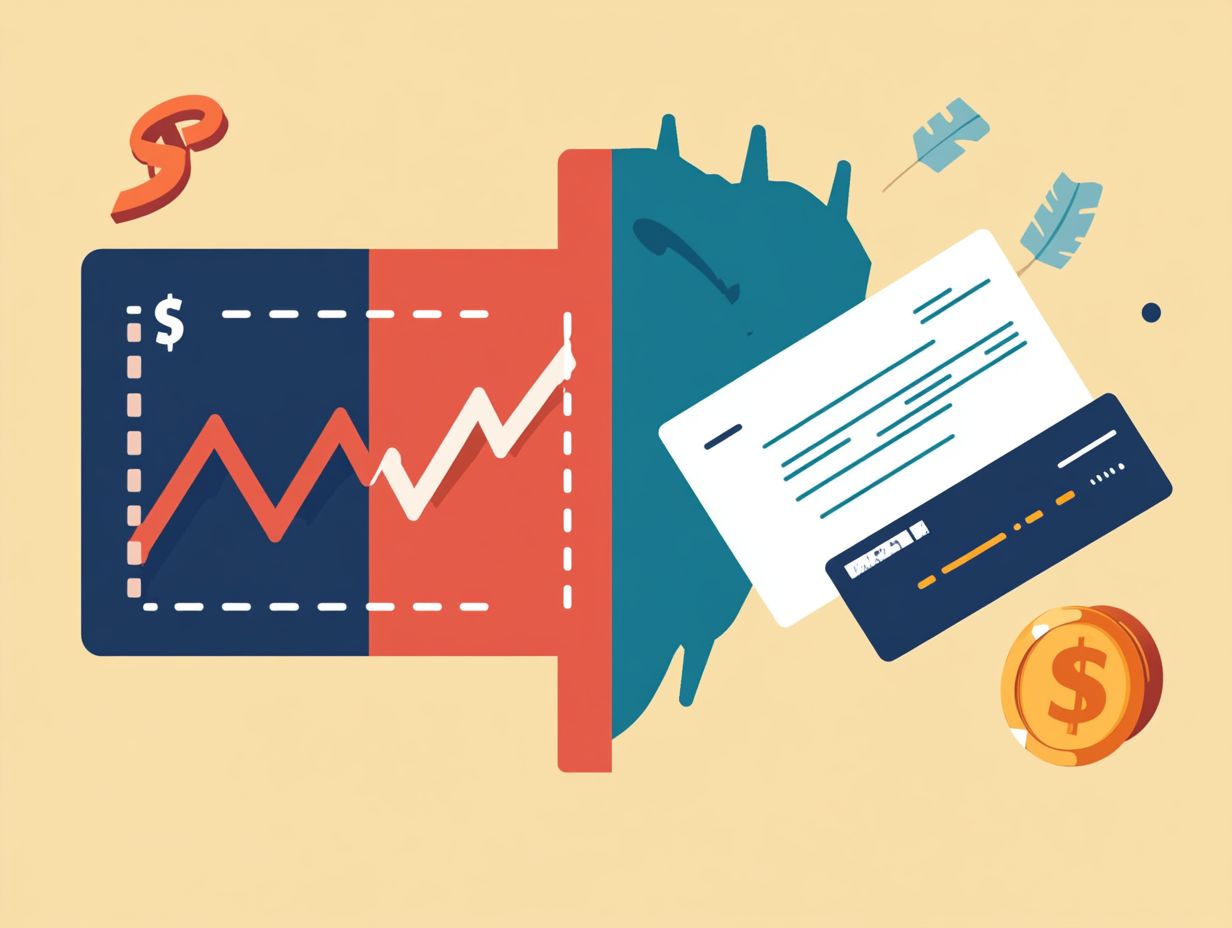
- Market risk: potential loss due to market changes.
- Credit risk: the risk of non-payment by borrowers.
- Different tools and strategies are needed to measure and manage each type of risk.
Defining Market Risk and Credit Risk
Market risk and credit risk are pivotal elements of the financial landscape. They embody the potential for loss stemming from market fluctuations and borrower defaults, respectively.
In finance, market risk captures uncertainty surrounding asset values due to evolving market conditions. Credit risk highlights the likelihood of a borrower failing to meet their financial commitments.
Grasping these risks is essential for your business management strategy. They profoundly influence investment portfolios and overall financial health.
Both financial risks can lead to significant losses if not managed effectively. This underscores the importance of robust risk management practices.
Consider how fluctuations in interest rates, exchange rates, or stock prices can negatively impact the market value of your investments. Inadequate credit evaluations can inflate default rates among borrowers.
To mitigate these risks, adopt a systematic approach to risk identification, measurement, and control. By implementing rigorous credit assessments and analyzing market dynamics, you can bolster your resilience against potential losses.
This ensures sustained profitability and stability even amid uncertainty.
Key Differences Between Market Risk and Credit Risk
Understanding the distinctions between market risk and credit risk is vital as an investor or financial manager. Each type presents unique factors and exposures that cannot be overlooked.
Market risk stems from broader market trends that affect all assets. Credit risk zeros in on individual borrowers and their capacity to fulfill financial commitments.
By understanding these differences, you can enhance diversification and effectively manage investment risks within your portfolio.
Types of Risk and Their Effects
Various types of financial risks, including operational risk and liquidity risk, can profoundly impact your firm s performance. It s crucial to grasp their effects.
Operational risk stems from failures in your internal processes or systems. Liquidity risk refers to the inability to meet financial obligations without incurring excessive costs.
Think of stress tests as a safety net that helps you prepare for financial storms. Recognizing these risks enables you to refine your asset management strategies and develop effective risk mitigation plans.
Understanding operational vulnerabilities allows you to streamline your processes and invest in technology that protects against disruptions. Anticipating liquidity challenges strengthens your cash flow management.
This proactive approach enables you to navigate turbulent waters and safeguard your profitability. It also helps maintain investor confidence, ultimately fostering long-term sustainability.
Measuring Market Risk and Credit Risk
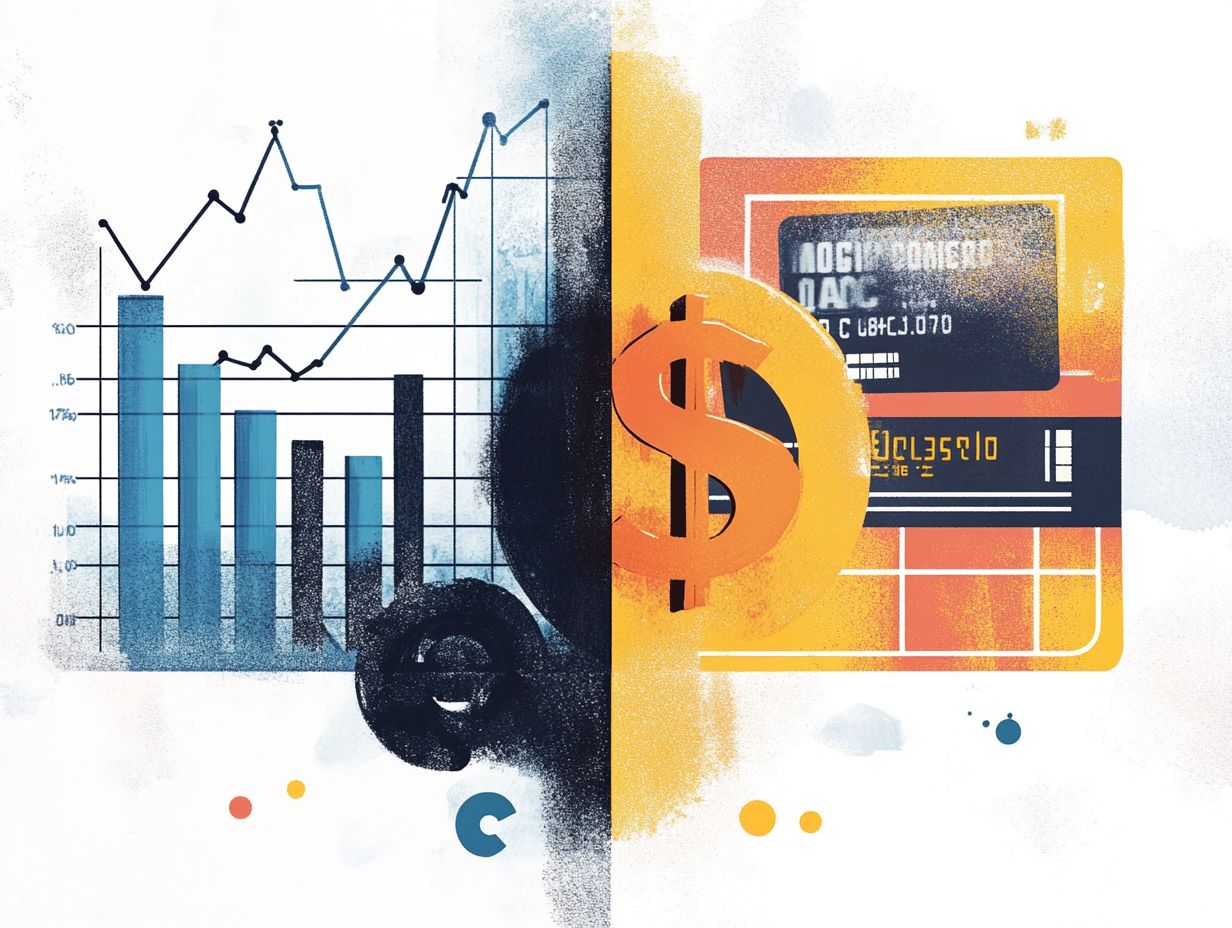
Measuring market risk and credit risk is crucial for your effective risk management strategy. You ll need to employ a range of risk measures and assessment tools to accurately evaluate exposure and potential losses.
In market risk assessments, you often draw on historical data and scenario analysis to determine volatility risk. Credit risk evaluations rely on credit assessments to gauge the likelihood of borrower defaults.
Both approaches are essential for calculating economic capital. This ensures that your firm maintains sufficient resources to withstand potential financial shocks.
Tools and Methods for Assessment
Effective risk management hinges on various tools and methods for assessment, such as stress tests and risk budgets. These help manage exposure and establish position limits.
Stress tests simulate extreme market conditions to assess how various risks could affect your financial health. Risk budgets assist in allocating capital efficiently across your investment portfolio.
By utilizing these tools, you can effectively identify and mitigate operational, credit, and market risks.
Another essential tool is Value at Risk (VaR), which measures how much money you might lose on an investment over a certain period, under normal market conditions. By calculating potential losses, you can determine how much capital needs to be held in reserve, bolstering your financial stability.
These assessment methods ensure compliance with regulatory requirements and enhance your strategic investment decisions.
During a financial downturn, stress testing may unveil vulnerabilities. This prompts you to reevaluate your asset allocation, enabling you to create a more resilient portfolio that aligns with your organization’s risk appetite.
Managing Market Risk and Credit Risk
Managing market risk and credit risk is vital for fostering a robust business environment. Your approach to risk management should revolve around strategies that emphasize mitigation, diversification, and optimal capital allocation.
By embracing a diversified investment portfolio, you can significantly reduce your overall risk exposure. This enhances your resilience against financial shocks.
Implementing a comprehensive risk management framework helps you navigate the complexities of financial markets and meet regulatory standards.
Strategies for Mitigation and Control
Implementing strategies for risk mitigation and control is essential for safeguarding your company s financial health in today s volatile markets. Techniques like meticulous cash flow management and ensuring money for daily operations can help mitigate liquidity risk.
By establishing clear risk protocols, you can enhance your organization s resilience against unforeseen events. Incorporating a strong risk assessment framework into your daily operations enables you to proactively identify potential threats, enabling you to allocate resources more effectively.
Regular training and awareness programs will equip your employees with the necessary tools to spot and respond to emerging risks. Understanding the need for a flexible approach is crucial, as market conditions can shift unexpectedly.
Ongoing evaluation of your strategies ensures that your organization remains agile and ready to tackle new challenges. Continuously monitoring performance metrics and gathering stakeholder feedback helps you fine-tune your risk management tactics.
Act now to ensure your business thrives in the face of market uncertainties!
Impact of Market Risk and Credit Risk on Businesses
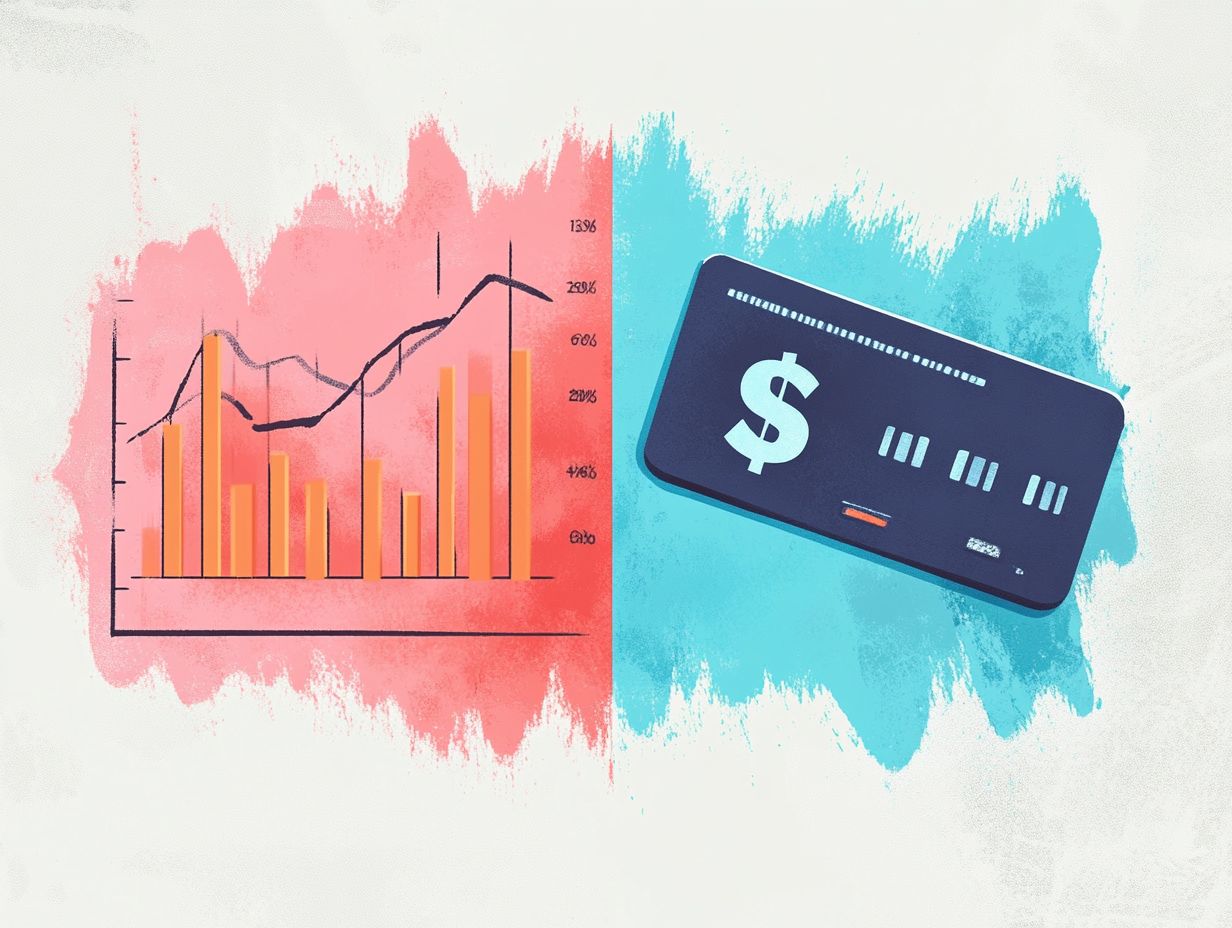
The influence of market risk and credit risk on your business can be substantial. It impacts everything from operational stability to long-term growth potential.
Market risk may result in considerable fluctuations in asset values. Credit risk threatens cash flows whenever borrowers fail to meet their obligations.
Grasping these implications is essential for effective business management. It can guide your strategic decisions, helping to enhance resilience in unpredictable economic environments.
Understanding the Consequences
Understanding market risk and credit risk is crucial for business leaders. These factors directly impact financial health and decision-making.
Risk elements, such as the risk of prices changing suddenly, can lead to unexpected losses. Poor money management may jeopardize your firm s ability to meet financial obligations. By recognizing these challenges, you can take proactive steps to safeguard your financial stability.
Consider the 2008 financial crisis, where many firms overexposed themselves to risky mortgage-backed securities, resulting in significant losses and even bankruptcies. Companies that used strong risk management, like JPMorgan Chase, successfully navigated those turbulent waters, showcasing remarkable resilience.
These examples highlight the importance of monitoring market fluctuations and creditworthiness. By investing in comprehensive risk assessments, you position your organization to make informed decisions, ultimately protecting your assets and ensuring longevity in an unpredictable environment.
Frequently Asked Questions
Understanding market and credit risks is vital for making effective financial decisions. Below are some common questions:
What is the difference between market risk and credit risk?
Market risk refers to potential losses due to changes in market conditions, such as fluctuations in interest rates or stock prices. Credit risk, on the other hand, is the risk of a borrower not repaying their debt. In simpler terms, market risk involves losing money due to external factors, while credit risk involves not being paid back.
How are market risk and credit risk measured?
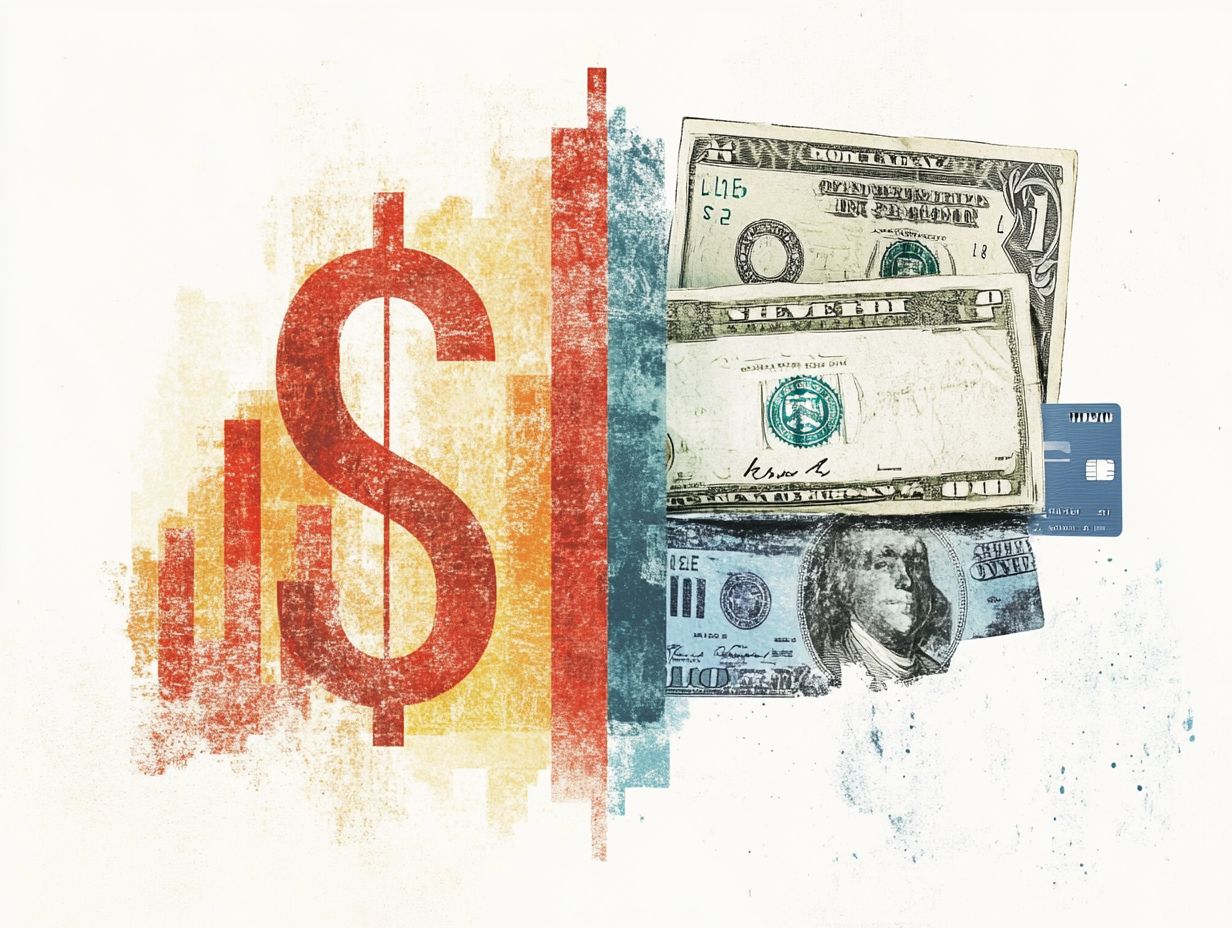
Market risk is typically measured using metrics like value-at-risk (VaR) and expected shortfall, which calculate potential losses under different market scenarios. Credit risk is assessed through credit ratings and probabilities of default, which evaluate the likelihood of a borrower defaulting on their obligations.
Which type of risk is more significant for financial institutions?
This can vary depending on the specific institution and its activities. Generally, financial institutions face both market risk and credit risk, but the extent of each can differ. For example, a bank focused on lending would face more credit risk, while a hedge fund involved in trading would contend with more market risk.
How do market risk and credit risk impact investment decisions?
Both market risk and credit risk are essential considerations for investment decisions. Market risk can affect potential investment returns, while credit risk influences the likelihood of receiving expected returns. Investors must assess both types to make informed decisions.
Can market risk and credit risk be managed?
Yes, both risks can be managed through various techniques. For market risk, strategies may include diversification, hedging, and stress testing. For credit risk, techniques like credit analysis, setting credit limits, and using collateral can help manage the risk.
What are some examples of market risk and credit risk?
Examples of market risk include interest rate risk, currency risk, and market volatility. Credit risk examples include default risk, counterparty risk, and credit concentration risk. These risks can manifest in different ways, such as changes in interest rates affecting bond prices or a borrower defaulting on a loan.


